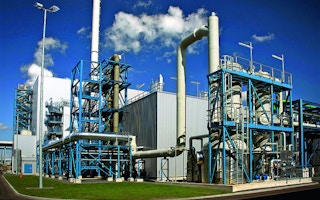Produced by the Parliamentary Advisory Group on CCS, led by Lord Oxburgh, for the Department for Business, Energy and Industrial Strategy, the report sets out the potential for the beleaguered technology in the UK, and how the government could foster a cost-competitive industry before 2030.
“There is a widespread view that CCS has to be expensive,” the report says. The government itself appeared to hold this view when, in 2015, it cancelled its £1bn competition for carbon capture and storage based on its supposedly high costs. This was seen as a huge blow to an industry that had spent years preparing to deliver new CCS projects.
But CCS can actually be delivered at £85 per megawatt hour, according to the report, which means that the price paid by consumers for early examples of the technology would be immediately competitive with other forms of clean power.
Potential
The UK is ready for CCS, says the report — both the technology and the supply chain are ready to deliver.
However, lead times for new projects are long and, therefore, decisions need to be delivered quickly. The report envisages new projects being built as soon as 2020, to be operated by 2023.
The UK also has natural advantages when it comes to CO2 storage, the report says. “Ample, safe and secure CO2 storage capacity is available offshore in the rocks deep beneath UK territorial waters and this represents the least cost form of storage at the scale required.”
Costs
CCS plays an important role in the Committee on Climate Change’s (CCC) 2013 least-cost pathway to meeting the UK’s target of reducing emissions by 80 per cent by 2050. The CCC is responsible for providing independent advice to the government.
According to the CCC, developing CCS in the 2020s could deliver benefits of more than £15bn on the path towards hitting the UK’s 2050 target. It adds that, without CCS, the cost of meeting this target would almost double, from 0.5 per cent of GDP up to 0.9 per cent.
While the costs of the initial CCS demonstration projects planned for the UK amounted to £150-170/MWh, the CCC saw costs falling to below £100/MWh in the 2020s.
The report by the Parliamentary Advisory Group undercuts this further. It bases its assumption that power can be bought at £85/MWh from plants equipped with CCS on a 2012 report by Mott MacDonald, drawn up for the former Department of Energy and Climate Change. This showed lowest cost technology costing £86/MWh by 2028.
For reference, the agreed price for the controversial Hinkley C nuclear power plant is £92.50/MWh, potentially falling to £89.50. Future offshore wind projects will be capped at £105/MWh, falling to £85/MWh for projects commissioning by 2026.
Plan
For these cost reductions to take place, the government needs to have a hand in it, according to the report. It sets out a series of recommendations on how to get CCS off the ground.
The central step is to establish a “CCS Delivery Company” (CCSDC). This would be a state-owned enterprise tasked with delivering whole CCS projects, says the report. This company should have a mandate of sticking to the £85/MWh cap, so that they were only delivering projects that deliver power at the lowest possible cost to the consumer.
This company should be formed and funded as soon as possible, says the report. In the first place, it would require a budget of £200m-£300m. This would be to develop projects to the point of an investment decision, rather than money towards construction itself.
As its only mandate would be to invest in low-cost CCS projects, there would be no specific instructions as to the scale, technology and location of what it delivers.
However, by 2030, the company should be sequestering 15m-30m tonnes of CO2, representing 10-30 per cent of current power sector emissions.
This will be fitted to power stations that will supply 24-48 terawatt hours (TWh) per year of new electricity — 12-24 of the additional 200/TWh per year of new low-carbon power generation that the CCC says is required in the 2020s.
This story was originally published by Carbon Brief under a Creative Commons’ License and was republished with permission. Read the full story.










